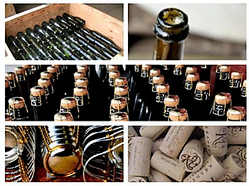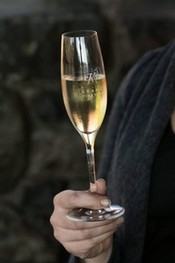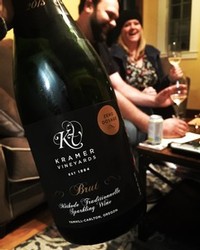The Art of Dosage: Transforming Sparkling Wines with a Delicate Touch
 Have you ever wondered what dosage means in champagne and sparkling wine? Allow us to shed some light on this vital aspect of the winemaking process.
Have you ever wondered what dosage means in champagne and sparkling wine? Allow us to shed some light on this vital aspect of the winemaking process.
Dosage refers to the addition of a finishing syrup after the second fermentation in the bottle. This step involves carefully introducing small amounts of sugar to the wine. The purpose of dosage is multi-fold: it helps to balance the naturally high acidity of the wine, accentuates its fruit flavors, contributes to a smoother texture, and so much more.
We highly recommend reading this interview with noted Champagne expert Peter Liem by wine writer Jaime Goode for a comprehensive and insightful read on dosage, grower-producers, and viticulture. It provides a holistic understanding of the role of dosage in creating exceptional sparkling wines.
 In our cellar, we eagerly anticipate the moment we get to taste our sparkling wines shortly after bottling. The wine is dry, effervescent, and alive with suspended yeast cells at this stage. It never fails to be a thrilling experience.
In our cellar, we eagerly anticipate the moment we get to taste our sparkling wines shortly after bottling. The wine is dry, effervescent, and alive with suspended yeast cells at this stage. It never fails to be a thrilling experience.
Once the second fermentation is complete, we carefully evaluate the need for dosage. We prepare a range of wines with varying sugar levels, up to 10 grams per liter. Throughout our winemaking history, we have bottled sparkling wines with dosages ranging from 3 to 8 grams per liter. However, we must admit that we also have a soft spot for crisp, tart, and bone-dry wines that don't require any additional dosage.

As a sparkling winemaker, my perspective on dosage has evolved significantly. When younger and less experienced, I preferred the romance of a perfect, raw sparkling wine without dosage. I have since learned that when the dosage is employed judiciously, it can elevate a wine and bring out its true essence in a way that remains authentic to the terroir and vintage (while leaving room for zero-dosage wines when that's the best expression of these qualities).
While the movement towards lower or zero dosage has gained traction over the last two decades, particularly among grower-producers emphasizing terroir expression, I have come to appreciate the transformative potential of dosage when used thoughtfully and in harmony with the wine's character.
Today, I invite you to join me in a deeper exploration of dosage's intricate role in champagne and sparkling wine. Let us take a moment to cherish how dosage contributes to the delightful flavors, textures, and nuances that unfold in every glass. If you are intrigued to experience the range of our sparkling wines, please visit our website or contact us for more information.
Together, let's toast the exquisite art of dosage and celebrate the wondrous journey of Kramer sparkling wines. Cheers to the magic that unfolds in each bottle!